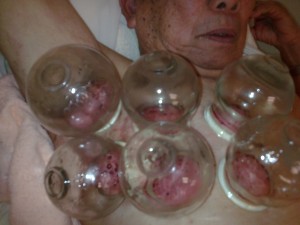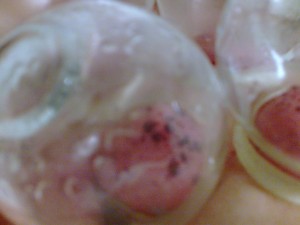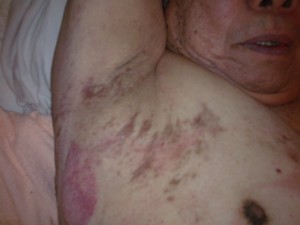Shingle is a disease caused by the varicella-zoster virus – the same virus that causes chickenpox. After you have chickenpox, the virus stays in your body. It may not cause problems for many years. As you get older, the virus may reappear as shingles. Unlike chickenpox, you can’t catch shingles from someone who has it.
Early signs of shingles include burning or shooting pain and tingling or itching, usually on one side of the body or face. The pain can be mild to severe. Blisters then form and last from one to 14 days. If shingles appear on your face, it may affect your vision or hearing. The pain of shingles may last for weeks, months or even years after the blisters have healed.
There is no cure for shingles. Early treatment with medicines that fight the virus may help. These medicines may also help prevent lingering pain. A vaccine may prevent shingles or lessen its effects. The vaccine is for people 60 or over.
Postherpetic neuralgia
Postherpetic neuralgia is a pain in the area where a shingles infection once occurred. The pain may last for months or years.
Causes
Postherpetic neuralgia occurs when the nerves have been damaged after an outbreak of shingles. Shingles are caused by the varicella-zoster virus, the same virus that causes chickenpox.
Postherpetic neuralgia is more likely to occur in people over age 60.
Symptoms
The main symptom is a pain in the area where shingles once occurred. The pain can range from mild to very severe. It lasts for months, sometimes years, after the original shingles infection.
Treatment
Anticonvulsant drugs, usually used for seizures, may help with the pain of damaged nerves. Gabapentin and pregabalin are the ones most commonly used to treat postherpetic neuralgia.
Skin patches with lidocaine (a numbing medicine) may also be prescribed to relieve some of the pain for a period of time.
Pain medications are often needed. Sometimes acetaminophen or NSAIDs such as ibuprofen are enough. Many patients will need stronger, prescription drugs such as codeine, hydrocodone, and oxycodone.
Drugs used to treat depression (antidepressants) may also help reduce pain, as well as help with sleep.
Electrical nerve stimulators may be used for severe, long-term cases of postherpetic neuralgia.
Consultation with a pain specialist may be necessary in some cases.
I Helped by acupuncture and cupping a patient who had shingles for three months, blisters on back and chest(right side) disappeared in two weeks, then the pain in right back and chest still is severe, taking painkillers, no use, can not sleeping at night, because of the Postherpetic neuralgia.
I use acupuncture and cupping, after three treatments, he feels very well, pain relief lots, sleeping is good and needs no painkillers before going to bed. see the photo during cupping.
see the photo bleeding in the cup after cupping.
see the photo of the patient skin after shingles.
I have done acupuncture for 31 yrs, I got a doctoral degree in acupuncture from a Chinese university in 1995, and I had acupuncture work experience in a big hospital in China, and I have the Chinese medicine clinic in Mt Albert Auckland NZ from 2002, so if you would like to choose an acupuncturist to fix your problem, please come to my clinic, you will have an excellent choice.
If you would like to make an appointment please call us on (09) 8150518 or visit us at 1054 new north road, mt Albert. if you require more information you may e-mail us at hwenchuan@sina.com
Trackbacks and pingbacks
No trackback or pingback available for this article.



 中文微信:nzacupunctureclinic
中文微信:nzacupunctureclinic
Leave a reply